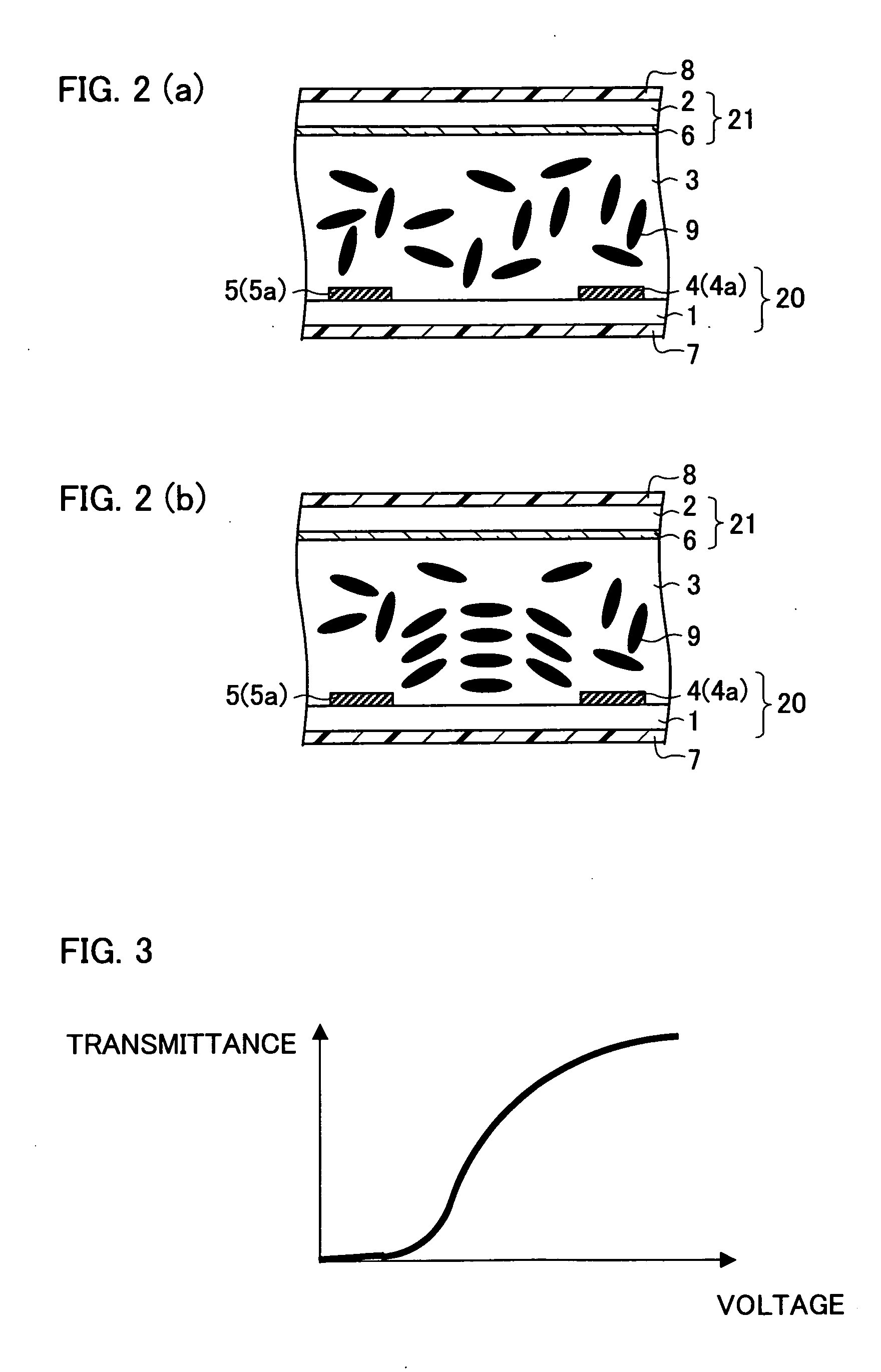Display element and display device
a display element and display device technology, applied in the field of display devices, can solve the problems of slow response, large hindrances to tn mode, narrow viewing angle, etc., and achieve the effects of easy temperature control, precise temperature control, and fast response speed
- Summary
- Abstract
- Description
- Claims
- Application Information
AI Technical Summary
Benefits of technology
Problems solved by technology
Method used
Image
Examples
second embodiment
[0259] The following will explain another embodiment of the present invention with reference to FIG. 7. The following embodiment basically explains only the difference from First Embodiment. For ease of explanation, materials having the equivalent functions as those shown in the drawings pertaining to First Embodiment above will be given the same reference symbols, and explanation thereof will be omitted here.
[0260] As with First Embodiment above, in the display element according to the present embodiment, there is no alignment film on the substrate 1 where the electrodes 24 and 25 are formed. Therefore, in the display element of the present embodiment, voltage application from the electrodes 24 and 25 to the medium A in the medium layer 3 is not performed via the alignment film. Therefore, in the display element of the present embodiment, the voltage amount applied to the medium A does not decrease, thereby achieving significant reduction in driving voltage.
[0261] In First Embodi...
PUM
| Property | Measurement | Unit |
|---|---|---|
| angle | aaaaa | aaaaa |
| angle | aaaaa | aaaaa |
| selective wavelength range | aaaaa | aaaaa |
Abstract
Description
Claims
Application Information
 Login to View More
Login to View More - R&D
- Intellectual Property
- Life Sciences
- Materials
- Tech Scout
- Unparalleled Data Quality
- Higher Quality Content
- 60% Fewer Hallucinations
Browse by: Latest US Patents, China's latest patents, Technical Efficacy Thesaurus, Application Domain, Technology Topic, Popular Technical Reports.
© 2025 PatSnap. All rights reserved.Legal|Privacy policy|Modern Slavery Act Transparency Statement|Sitemap|About US| Contact US: help@patsnap.com



